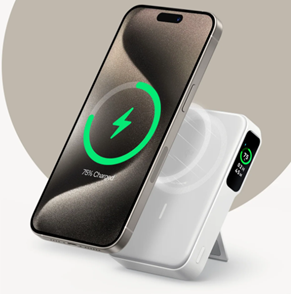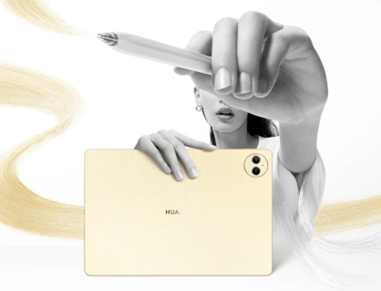Nowadays,
we can’t live without wireless chargers, which charge our devices easily.
Getting your charger to perform as claimed requires more. Device compatibility,
charger location, and environmental interferences affect charging efficiency.
Smart charging in Anker PowerWave II Pad and other high-quality models
optimizes device power supply. In this article, we’ll examine your wireless
charger’s performance and provide tips for improving it.

What Factors Impact
Wireless Charging Efficiency?
To
maximize wireless charger performance, you must understand how they work.
Charge speed depends on several aspects, including device and physical
impediments. Anker PowerWave II Pads, which are worldwide interoperable and
provide smart charging, may be improved. To get the most out of your charger
and charge your devices fast, securely, and dependably, understand how device
compatibility, power output, and case thickness affect charging efficiency.
Device Compatibility
Matters
The
effectiveness of your wireless charger is greatly affected by the compatibility
of your device. Using a charger that is compatible with your device’s power
requirements will greatly improve charging speed and safety. Numerous products,
such as wireless-charging AirPods, Samsung Galaxy phones, and iPhones, are
compatible with the Anker PowerWave II Pad since it is Qi-certified. To make
sure you get the most out of your charger, check that your device is
Qi-enabled. You risk damaging your device, getting slower charging rates, or
both if you use an uncertified or unsuitable charger.
The Role of Charging
Speed and Power
The
wireless charger’s power output and your device’s individual power needs are
the primary determinants of charging speed. The Anker PowerWave II Pad, for
instance, can detect when a device requires a 5W, 7.5W, 10W, or 15W charging
mode and switch between them automatically. If your device can handle the
increased power, a greater wattage output will allow for quicker charging. For
optimal charging efficiency, choose a charger that has different power modes.
This will allow you to choose the power level that your device needs. Reduced
charging speed or damage to the battery's health might result from incorrect
power outputs.
Understanding the
Impact of Case Thickness
Though
they shield your phone from harm, bulky phone cases might obstruct wireless
charging. With the Anker PowerWave II Pad, customers can charge their
smartphones without removing their cases since it is intended to enable
charging through cases up to 5 mm thick. Having a solid connection between the
charger and the smartphone is essential for efficient charging. However, cases
that are bulkier or made of metal might act as a barrier and lower this
efficiency. Using a wireless charger-friendly case will help prevent this
problem. If you notice that charging is taking longer than planned, you can
also remove the cover. It is also critical to be properly aligned in these
cases.

How Can You Improve
Wireless Charger Placement?
Wireless
charging efficiency depends on positioning. Even with a high-quality product
like the Anker PowerWave II Pad, charger location and angle affect efficiency.
Device location on the charger, surface stability, and electrical interference
affect charging. Think carefully about these items to enhance your wireless
charger’s utilization. Placing it correctly will speed up and ensure that your
smartphone is always fully charged.
Choose the Right
Surface for Stability
When
it comes to wireless charging, stability is paramount. You risk losing the
charge-to-phone connection if you set your charger on a surface that isn’t flat
or non-slip. With the Anker PowerWave II Pad’s non-slip silicone rings on each
side, you can be certain that your phone will remain firmly in place—vibrating
or not. Be sure the charger rests on a level, firm surface to avoid any
misalignment. By keeping it in its "sweet spot" for efficient
charging without any disruptions, a solid arrangement helps keep the gadget running
smoothly.
Avoid Interference
from Nearby Electronics
Nearby
devices may interfere with the electromagnetic fields used by wireless chargers.
Interference from adjacent electronic equipment, such as speakers, laptops, or
other wireless chargers, might diminish charging speeds or provide inconsistent
connections. Keep other electrical gadgets at least a few feet away from your
wireless charger for optimal charging performance. A better and more dependable
connection between your charger and your smartphone may be achieved by keeping
a clean space around it, even though the Anker PowerWave II Pad is built to
manage electromagnetic interference properly. More efficient and quicker
charging with fewer interruptions results in less interference.
Optimize the Distance
Between the Charger and the Device
In
wireless charging, the function of distance is significant. For the
electromagnetic field to function well, the charger and the gadget need to be
in close proximity to one another. For best results with the Anker PowerWave II
Pad, position your smartphone squarely in the middle of the pad when charging.
Charging efficiency is greatly reduced with even a small amount of
misalignment, leading to decreased charging rates or complete disconnection of
the charge. Make sure the gadget is positioned precisely in the charger’s sweet
spot to stay away from this. Another piece of advice is to keep anything out of
the way of the phone and the charger; doing so could limit charging performance
due to signal weakening.
Conclusion
To
maximize wireless charger performance, pay attention to charger location, power
output, and device compatibility. High-quality products like the Anker
PowerWave II Pad which enables smart charging, adapts power output to your
device’s needs and allows charging via cases. Maximizing surface area, reducing
interference, and keeping everything in place speeds up charging. If you pay
attention to these details, you may use the wireless charger to charge your
devices without cables.



